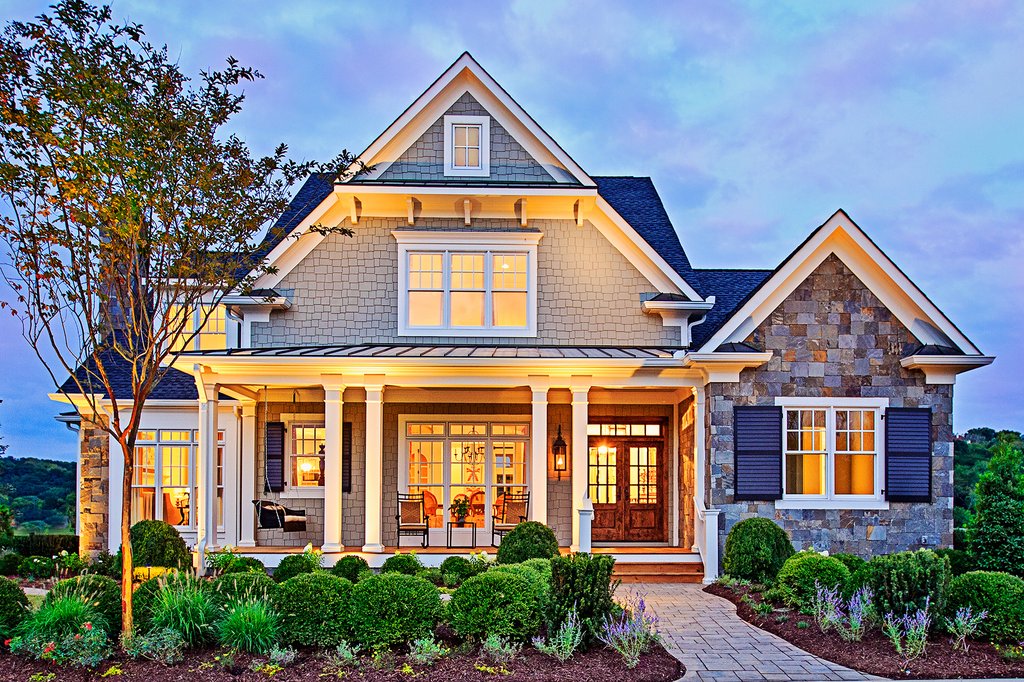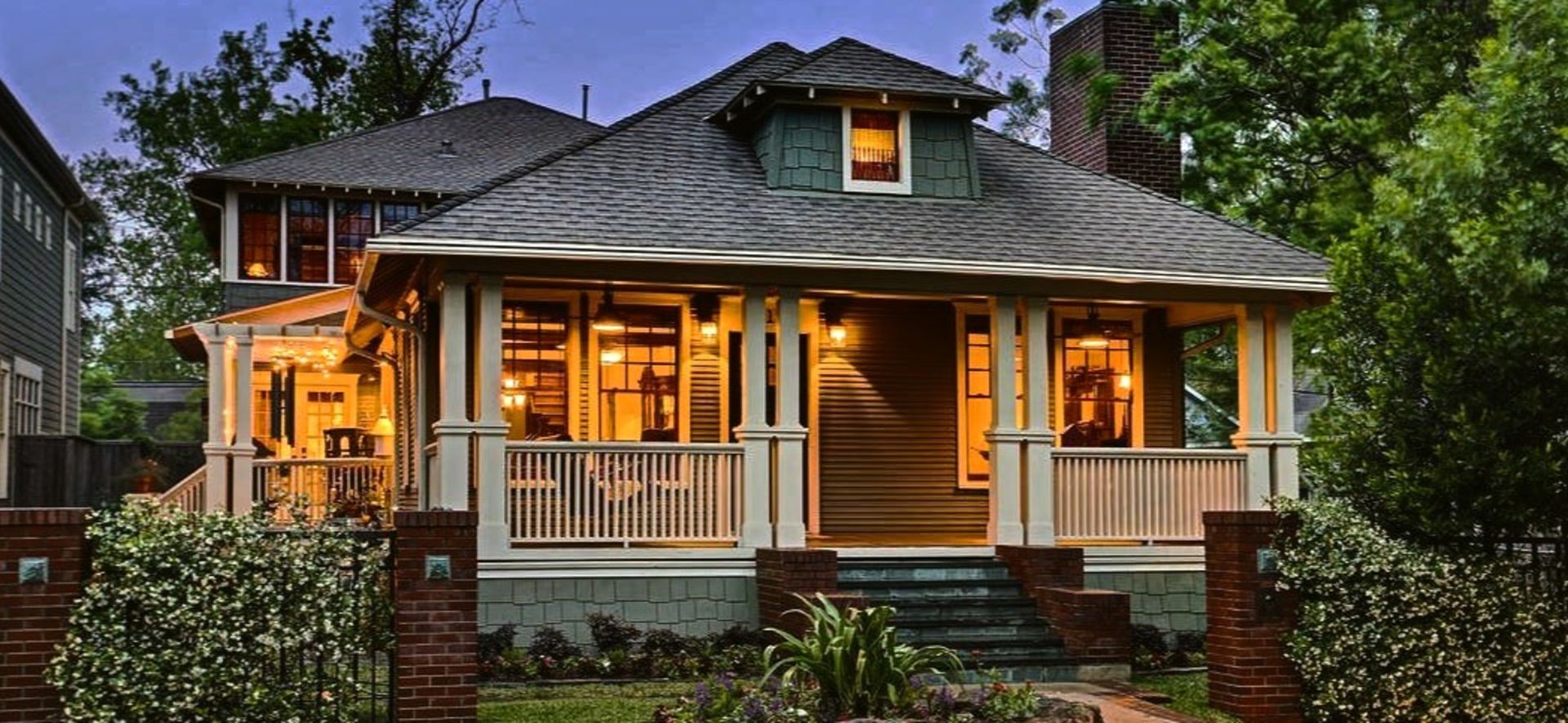The Role of Arts & & Crafts Architects in Elevating Architectural Solutions in Residential Style
Arts and Crafts architects considerably influence property design with their commitment to craftsmanship and sustainability. They prioritize handcrafted details and all-natural materials, which boost both visual appeals and community identity. By including clients in the layout procedure, these architects produce distinct space that reverberate with individual preferences. This method elevates concerns regarding the future trajectory of domestic architecture and its potential influence on area characteristics. craftsman style house. What lies in advance for this ageless design philosophy?

The Concepts of Arts and Crafts Architecture
The essence of Arts and Crafts architecture depends on its dedication to workmanship and simpleness. This building movement emerged in the late 19th century as an action to automation, emphasizing the value of handcrafted details and natural materials. The principles of Arts and Crafts architecture prioritize performance and consistency with the setting. Frameworks typically feature low-pitched roofing systems, broad eaves, and subjected rafters, advertising a feeling of unity with nature.
Artisans played a substantial duty in this design, usually incorporating attractive components like tarnished glass, floor tiles, and woodwork, which mirror neighborhood workmanship. The shade scheme has a tendency to be natural and suppressed, enabling buildings to blend seamlessly into their environments. Furthermore, the layout urges open layout and common spaces, fostering a feeling of togetherness. On the whole, the principles of Arts and Crafts architecture celebrate the beauty of simpleness and the relevance of human link to both nature and neighborhood.

Sustainable Practices in Residential Design
While the need for environmentally accountable living remains to expand, sustainable techniques in household style have actually gained significant traction among architects and property owners alike. Architects are significantly integrating energy-efficient modern technologies and lasting products right into their layouts, intending to lower carbon impacts and boost power preservation. Methods such as easy solar style, eco-friendly roofings, and rainwater harvesting systems are ending up being conventional elements of contemporary domestic architecture.
Moreover, the option of locally sourced materials decreases transportation emissions and sustains regional economic climates. Focus on all-natural light and ventilation not just improves interior air high quality but additionally decreases dependence on man-made lighting and environment control systems. These sustainable techniques show a dedication to protecting the environment while supplying property owners with comfy, effective living spaces. As understanding of environmental concerns grows, the assimilation of sustainability in residential layout is poised to come to be a defining feature of contemporary architecture, guided by the concepts developed by Arts and Crafts architects.
Personalization and Personalization in Home Design
Customization and customization in home style have arised as key patterns in response to the growing need for unique living atmospheres that mirror individual tastes and way of livings. Homeowners progressively look for to customize spaces that resonate with their personal identifications, leading to a more significant link with their living rooms. craftsman style house. This movement encourages architects to engage clients in the style procedure, cultivating collaboration that guarantees the final result symbolizes the home owner's vision
Elements such as bespoke layouts, customized materials, and customized coatings permit a varied series of anchor expressions in residential design. Arts and Crafts architects play a pivotal role in this development, highlighting craftsmanship and high quality. Their concentrate on integrating creative elements with functionality guarantees that each home is not only aesthetically pleasing but also uniquely matched to the inhabitants' demands. Consequently, this focus on modification boosts the general property experience, producing areas that are both personal and enduring.

The Impact of Arts and Crafts Architects on Neighborhood Aesthetics
As communities develop, the influence of Arts and Crafts architects considerably forms their visual landscape. By stressing handmade information, all-natural products, and typical building and construction strategies, these architects create homes that reverberate with their environments. Their layouts often incorporate local flora, appearances, and shades, cultivating a feeling of consistency between developed atmospheres and nature.
The Arts and Crafts movement promotes area identification with architectural connection. By urging house owners to embrace similar design concepts, communities establish a cohesive personality that improves aesthetic allure. This building uniformity not only improves the aesthetic experience but additionally imparts a sense of satisfaction amongst locals.
The emphasis on sustainability and craftsmanship in Arts and Crafts architecture straightens with contemporary worths, making these styles relevant in modern settings. Inevitably, Arts and Crafts architects contribute substantially to the total charm and social stability of areas, leaving an enduring impact on their visual legacy.

Future Trends in Arts and Crafts Architecture
With a boosting focus on sustainability and personalization, future patterns in Arts and Crafts architecture are positioned to blend conventional workmanship with modern development - craftsman style house. Architects are most likely to focus on environment-friendly products, utilizing recovered timber and all-natural stone to enhance the sustainability of property layouts. The integration of smart home technology will come to be typical, permitting customized living experiences without jeopardizing visual honesty
The resurgence of artisanal methods will promote go to my blog a renewed gratitude for handcrafted aspects, such as bespoke cabinets and custom-made ceramic tile job. Future styles might likewise show an emphasis on community-oriented spaces, encouraging interaction and link amongst residents. Outside living areas will acquire prestige, flawlessly integrating nature right into the home setting. As Arts and Crafts architecture develops, it will remain to recognize its origins while adjusting to contemporary needs, creating unified areas that show individual values and way of livings.
Regularly Asked Concerns
What Inspired the Arts and Crafts Movement in Architecture?
The Arts and Crafts activity in her explanation architecture was influenced by a reaction against automation, highlighting handcrafted top quality, all-natural materials, and a go back to standard craftsmanship, aiming to develop harmonious, functional rooms that celebrated artistry and originality.
Exactly how Do Arts and Crafts Architects Collaborate With Customers?
Arts and crafts architects team up with clients via open dialogue, prioritizing individual needs and visual appeals. They stress workmanship and sustainability, fostering a collaboration that integrates the customer's vision with the architect's expertise in layout and materials.
What Products Are Typically Made Use Of in Arts and Crafts Houses?
Usual materials in Arts and Crafts homes consist of natural timber, stone, and block, emphasizing workmanship and organic looks. These components produce a cozy, inviting environment, reflecting the motion's devotion to quality and simpleness in design.
Exactly how Do Arts and Crafts Layouts Enhance Indoor Living Spaces?
Arts and Crafts layouts improve interior living spaces by advertising natural light, open layout, and handcrafted details. These aspects promote a cozy, welcoming atmosphere, motivating a link between locals and their settings via thoughtful, functional appearances.
What Are Some Famous Examples of Arts and Crafts Architecture?
Famous examples of Arts and Crafts architecture include the Wager Residence, Greene and Greene's masterpiece in California, and the Robie Home by Frank Lloyd Wright. These frameworks display handcrafted information and consistency with nature, defining the movement's essence.